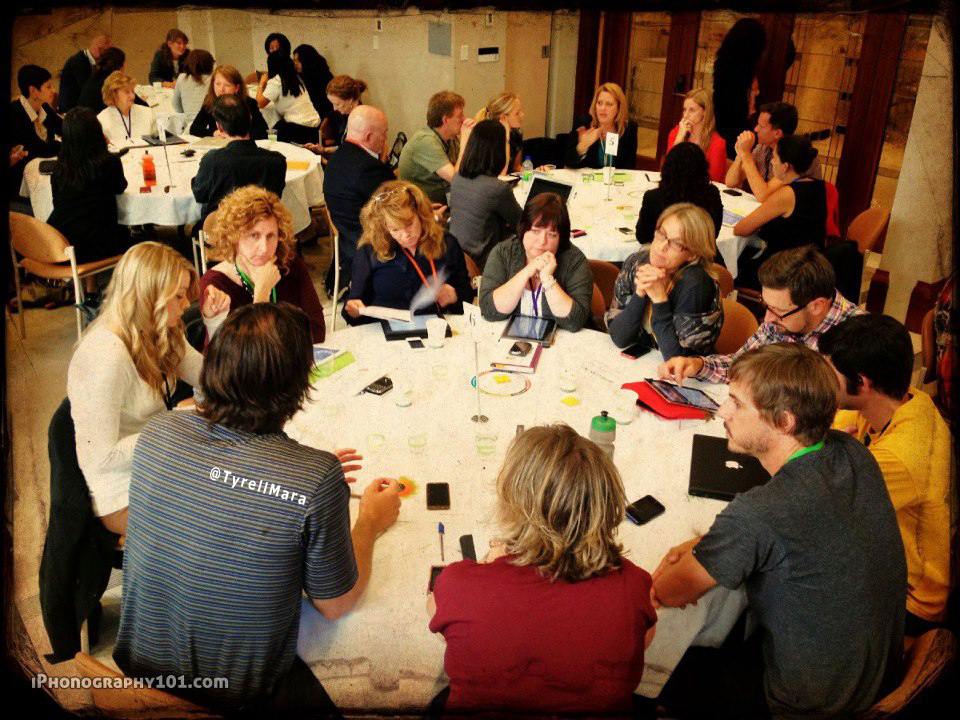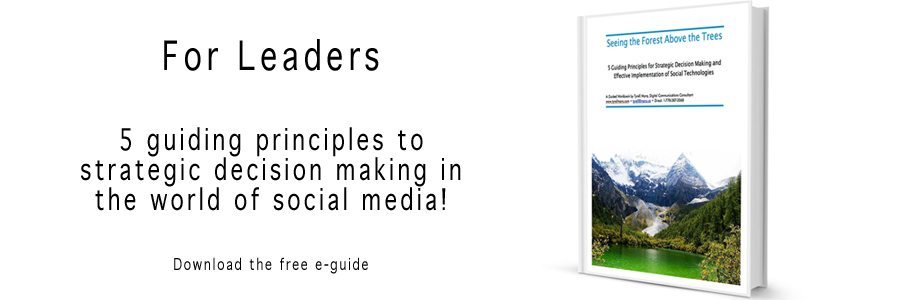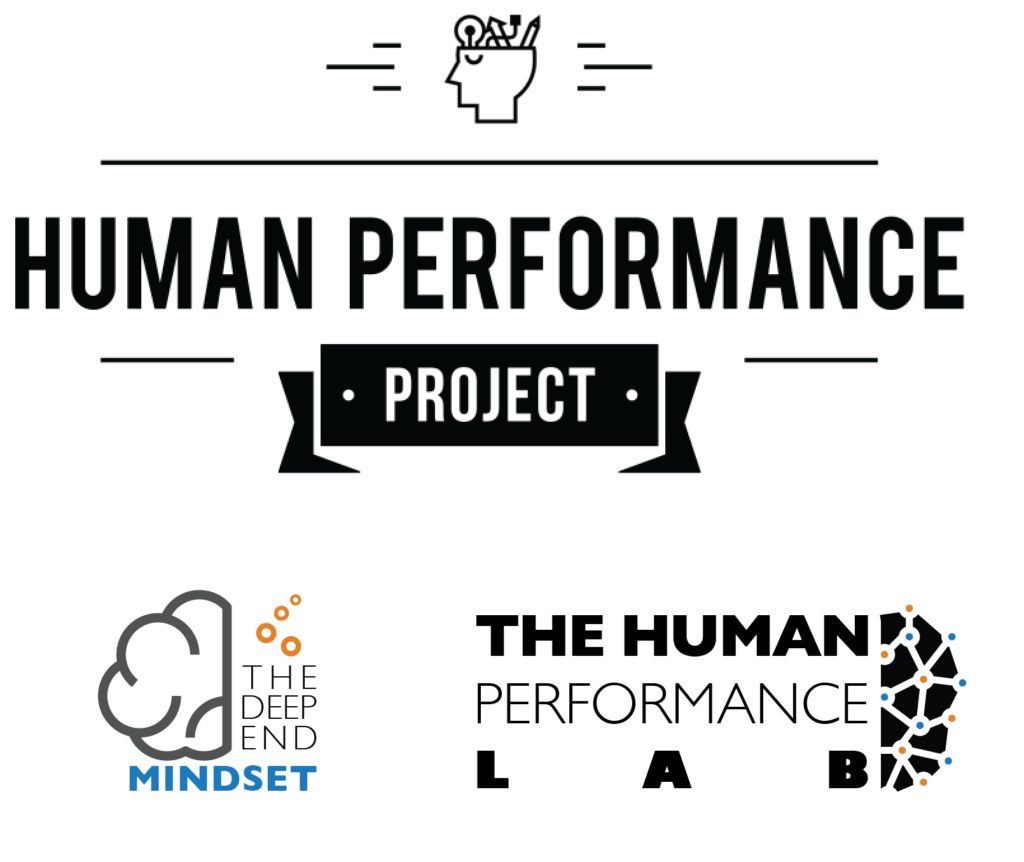Whether you're meeting with potential new clients, a project team you are currently working with, or debriefing a work project or experience – how you show up to these conversations will consciously and subconsciously shape how people view you and the value you bring to the table. This is true when we meet with people in a one on one or group setting, as well as face to face or remotely via a conference call or Skype.
How you “Show up in the room” (in person AND virtually) will play a big role in getting the contract, building great working relationships, and generating the trust that leads to referrals and follow up business.
"…while no single conversation is guaranteed to change a relationship, a life, or a business, any single conversation can…"
~ Susan Scott, Fierce Conversations
We all have the opportunity to be great conversation facilitators. Here is a list of 7 key principles I have seen, experienced, and practiced in my daily interactions!
If there are strategies or tips that you use that aren’t on this list, please share for us in the comments section below the post!
Be Prepared!
I think this is one of the most important and possibly most overlooked keys to having successful meetings and conversations.
How much time do you take to prepare for the conversation you are about to have? Do you mentally create the space and time before a call to shift gears and focus specifically on the meeting at hand? Or do you leave that until you are picking up the phone to dial?
Whether you know it or not, there is a connection between how you prepare for a meeting and how you “show up” to those in the room or on the call. We all have different approaches to get us in the zone, or “at the top of our game”. It is important to understand what this process looks like for you.
I will block off up to an hour before an important call to make sure I am mentally, emotionally, and intellectually prepared for the conversation. Believe it or not, this process for me resembles very closely how I would get ready for a big basketball game. The reason I do this is because those same processes and techniques that put me at my mental and emotional peak on the court can be applied to anything… Who said all athletes are just big dumb jocks! ;)
Have an Agenda
This goes hand in hand with being prepared.
If you are leading the meeting, have a standard process in place for creating a meeting agenda. This process may include (but certainly is not limited to):
- Capturing all topics that need to be covered
- Sending a draft agenda to meeting participants and requesting additional input
- Structuring the agenda based on how you want the conversation to flow
This proactive step shows other participants that your time is valuable. It also shows that you are invested in making sure the meeting is productive. As you prepare for the meeting, the agenda will also act as a great guide to help you facilitate and move the conversation along.
On the other hand, if you are not leading the meeting, I encourage you to request an agenda be sent out before hand. This will not only allow you to better prepare for the conversation, but it shows the other stakeholders how important the meeting (and your time) is!
Create Space to “Check in”
Checking in can be as quick as saying hi and asking how the week is going at the beginning of a call. Other times it can take up the whole meeting as you may discover issues lurking underneath the surface that need to be addressed before more meaningful work can be done.
It is up to you as the facilitator to gauge these check-ins and determine whether to go deeper or move forward.
The point here is simple, create the space at the beginning of a meeting for attendees to check in and share how they are doing. You can choose to structure the check in with a specific exercise, or simply allow participants to share what they need to be "fully present”. Make sure you are listening deeply to the language, tone, energy, and non-verbal communication if you are in the room together. Don’t be afraid to inquire if you feel someone is having a hard time or needs to get something off their chest before continuing.
Leaning into these conversations can be hard and uncomfortable, but the consequence of ignoring these issues that are underneath the surface will be significantly more detrimental not only to the meeting but the bigger picture of the project and working relationships as well.
Embrace the Silence
Yes, silence in any meeting, whether on the phone or in person can be awkward, uncomfortable, and sometimes almost unbearable – and yet many times silence can be the most powerful conversation catalyst.
A simple but important way to embrace silence is at the beginning of a conference call or webinar. I can’t tell you how many times I have been on the other end of a call where instead of pausing and requesting a few minutes to wait for attendees or co-facilitators, the person leading the call will attempt to fill the space with 5-10 minutes of small talk. Many times this is not necessarily appropriate for the given audience, and I’ve found that after 2 minutes of small talk, the silence that follows becomes much more awkward.
Instead, if you have a colleague that is running late, or you want to give attendees a few more minutes, say so! Inform the room that you will be going on mute for 5 minutes while you wait, and then you will get started. When you are ready to start (with or without your colleague or attendees), jump right in and get started. Don’t stall, start apologizing, or make excuses.
many times leaning into silence can be the most powerful conversation catalyst.
Hold the Space
Many times the most powerful and productive meetings are when you as the facilitator are not the one doing all of the talking. Remember, you have designed the agenda, and with that you understand the desired outcomes and objectives of the meeting. If you feel that the conversation among attendees is positive and moving towards those desired outcomes, hold the space. Don’t feel like you have to jump in and “control” the flow or direction. Instead, continue to be engaged and listen deeply, pose questions that will continue to guide and drive the conversation in the right direction.
When you have done all of the little things to show this conversation is important, the attendees participation matters, and a safe environment has been created, the skill of 'holding the space' becomes very valuable. Many times holding the space means having the courage to allow silence to be present when someone is gathering a thought, struggling with an idea or topic, or even dealing with an issue much more systemic than the topic of conversation.
Allowing these conversations to surface and be worked through in a safe space will not only help you move in the right direction in the meeting, but will also have broader positive effect on working relationships and long term success.
Closing topics and conversations
Especially when you are leading a meeting that has had some charged or intense conversations (positive OR negative), there is value in formally closing the topic before you segue to the next agenda item.
Sometimes it will make sense to move right into the next topic, but a good skill to practice is asking attendees if there are any final points, flags, or feelings that have come up during the conversation around a specific topic that they would like to voice before moving on.
Just like allowing attendees to check in by way of sharing what they need to “be fully present in the room”, formally segueing allows participants to share any final thoughts that may still be bubbling. As the leader you may identify important follow up conversations or action items from these final statements. However, know that you do not have to address them in the moment, instead make a note of anything important, and segue to the next item when you feel the group is ready.
giving your audience the opportunity to be fully at peace with the present topic will empower them to be fully engaged in the next one.
Capturing notes and following up
Just like the habit of creating an agenda as pre-work to a meeting, capturing important notes, themes, responsibilities, and action items is also very important. I am not a huge fan of taking “minutes”, or the idea of capturing every single little detail took place throughout the meeting.
Rather, I like to look for themes that emerge over the course of conversations, action items that arise from those themes, and any new topics that came up or conversations that were not concluded. In the preparation of my notes it then becomes much easier to create flow by using “themed headings” with a description of what came out of that conversation from key points, to action items, and any flags that were raised.
Again, in the spirit of being fully engaged in the process, this is another small step that shows the level at which you are invested. It will serve you as a way to make sure you have captured the important themes of the meeting, and will be appreciated by attendees as a way to keep everyone on the same page and fully accountable to their responsibilities.
My personal preference is to quickly draft these themes and notes as soon as possible after the call (10-15). At which point I’ll walk about from it and re-visit the notes later in the day, clean them up, and send them out!
Answering the, "So What?"
Think about how many key business relationships we create and develop (or have the opportunity to) through face to face, conference call, one to one, and group meetings. Many of us are going through these experiences on a daily basis, typically with key stakeholders to our projects or business. I have always been of the opinion of quality over quantity. Quality in this case means two things: First, when you do all of the little things to facilitate a truly meaningful meeting with productive conversations, you begin to realize that you need to meet significantly less often. Second, your quality of relationship with the client, team, or stakeholder will become stronger, which will ultimately lead to higher quality working relationships and opportunities.
What is the single most important thing that you do when having meaningful conversation?
Please take 30 seconds and share in the comments below!



